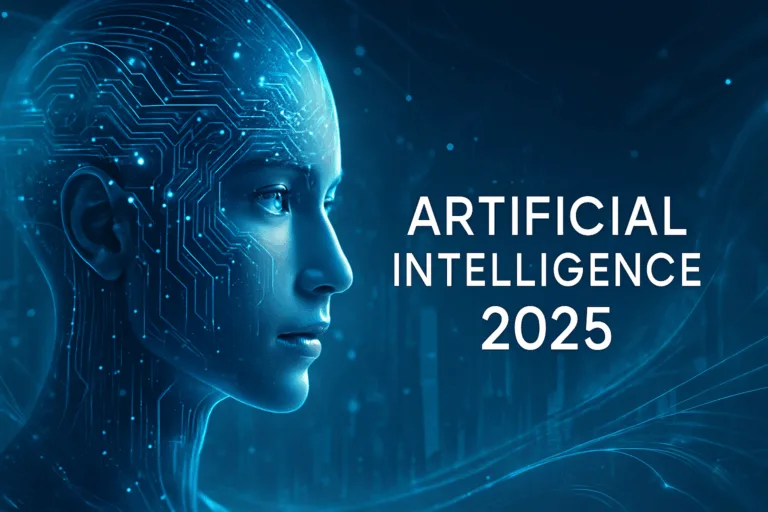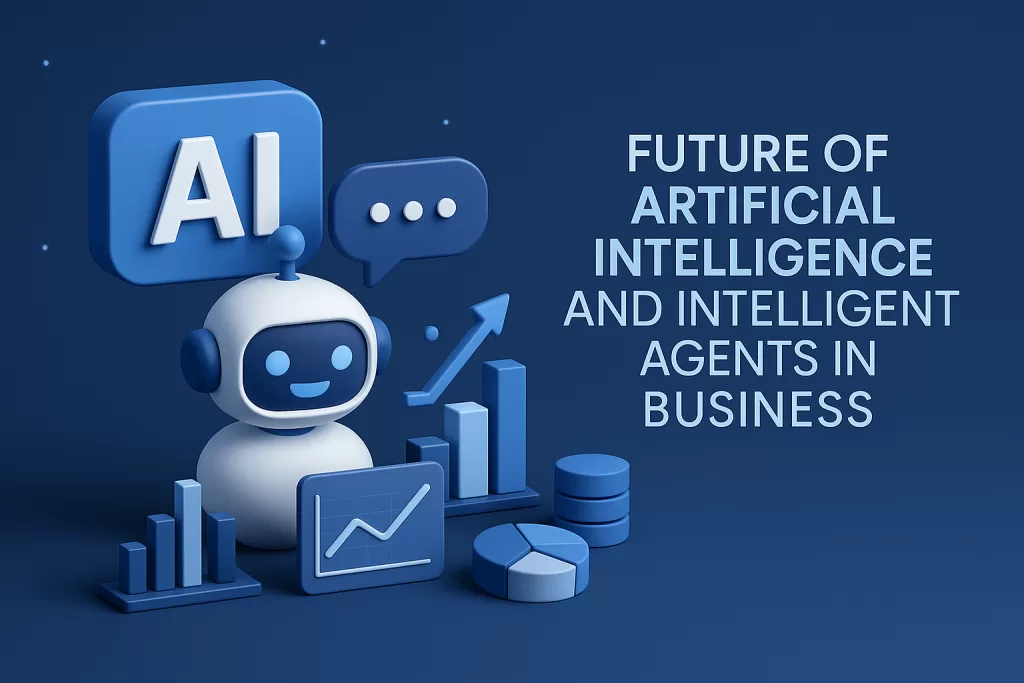Introduction
Since the emergence of the term Artificial Intelligence in the mid-20th century, this field has witnessed an unprecedented acceleration particularly between 2023 and 2025.
AI is no longer a supportive tool; it has become a core engine for data management, decision-making, and operational efficiency across all sectors.
Recent reports indicate that global investments in generative AI technologies surpassed $33.9 billion in 2025, an 18% increase from the previous year. Furthermore, 88% of global enterprises now use AI systems in their daily operations.
Major AI Transformations in 2025
1. Multi-Modal Large Models
The year 2025 has seen an explosion in large-scale AI models capable of processing text, images, video, and audio simultaneously.
Leading examples include OpenAI’s GPT-5 and Google DeepMind’s Gemini 2.5, which introduced deeper contextual understanding and logical reasoning.
These models are now widely applied in accounting, medicine, education, industrial design, and even drug discovery and financial analysis.
2. Agentic AI (Autonomous Intelligence)
A new trend called Agentic AI has emerged—AI that can execute complex tasks autonomously after interpreting user intent.
Such systems no longer just answer questions; they now schedule meetings, write code, analyze financials, and manage workflows.
Over 20% of major enterprises have already begun integrating autonomous agents into their operational structures.
3. Embodied Intelligence
This refers to merging AI algorithms with physical robotics, enabling machines to interact with the physical world.
In 2025, we witnessed robots equipped with advanced cognitive capabilities being deployed in factories, hospitals, airports, and logistics centers.
4. Explainable AI (XAI)
As AI becomes integral to finance, law, and governance, the demand for transparency has grown.
Explainable AI ensures that decision-making processes are interpretable and justifiable, building trust and accountability between humans and machines.
5. Intelligent Infrastructure
With AI models consuming vast amounts of energy, companies are now producing custom AI chips to improve efficiency.
Edge AI—running models locally on devices instead of the cloud—has become a game-changer, offering faster performance, lower costs, and stronger security.
Practical Applications of AI
Accounting and Business
AI now analyzes millions of financial transactions within seconds to detect errors or fraud.
It is used for auditing, budgeting, forecasting, and compliance, reducing report-preparation time by over 60%.
Healthcare
AI supports doctors in diagnosing diseases through image analysis and lab data interpretation.
Pharmaceutical companies use generative models to design new compounds in days instead of months.
Education
Smart learning systems now deliver personalized lessons based on each student’s ability.
By 2025, over two-thirds of major universities had adopted AI to manage curricula, evaluate performance, and improve teaching quality.
Energy and Sustainability
AI analyzes industrial data to minimize energy consumption and predict equipment failures before they happen, improving efficiency and reducing losses.
Ethical and Practical Challenges
Job Displacement and Workforce Evolution
While AI may eliminate many routine administrative roles, it also creates new opportunities in data science, AI engineering, and system supervision.
The future workforce will focus more on creativity, analysis, and ethical governance.
Regulation and Governance
Governments worldwide are developing frameworks to regulate AI use—such as the EU Artificial Intelligence Act, requiring transparency, fairness, and human oversight.
Privacy and Data Security
AI systems depend on massive datasets, raising serious privacy concerns.
By 2026, AI-driven encryption and cyber-resilience technologies are expected to become mainstream defense tools.
Algorithmic Bias
AI researchers continue addressing bias caused by non-diverse training data to ensure fair and inclusive outcomes.
The Near Future of AI
Artificial General Intelligence (AGI)
AGI represents a level where machines can think and reason like humans.
Experts predict that early AGI prototypes may emerge by 2030, but strict ethical and safety controls will be essential before deployment.
Human-Machine Collaboration
The goal is no longer to replace humans but to empower them.
Humans will supervise, analyze, and create—while AI handles repetitive and complex operations.
Specialized AI Models
The world is shifting toward domain-specific AI systems for fields like accounting, medicine, law, and energy, offering greater accuracy and efficiency than general models.
How Businesses Can Harness AI
Embrace digital transformation built on AI to enhance productivity.
Automate repetitive tasks such as reporting and forecasting.
Use predictive analytics for smarter decision-making.
Improve customer experience through AI chatbots and instant support.
Strengthen auditing and accounting accuracy by automating data analysis.
Conclusion
The year 2025 marks a turning point in the evolution of artificial intelligence.
It has become the core of global innovation and economic transformation, influencing every aspect of modern life—from education and healthcare to finance and law.
However, with this progress comes responsibility: to use AI ethically, transparently, and inclusively.
Artificial Intelligence is not meant to replace humanity but to partner with it in creating a smarter, fairer, and more sustainable future.
References
Stanford HAI – AI Index 2025 Report
McKinsey & Company – The State of AI 2025
Morgan Stanley Research – Five AI Trends Defining 2025
Anthropic – AI and Employment Forecast 2025
DeepMind – Gemini 2.5 Overview
OpenAI – GPT-5 Release Notes
TIME Magazine – Why AI Progress Is Increasingly Invisible
arXiv – Embodied AI with Foundation Models 2025
arXiv – Neuro-Symbolic AI Survey 2025




